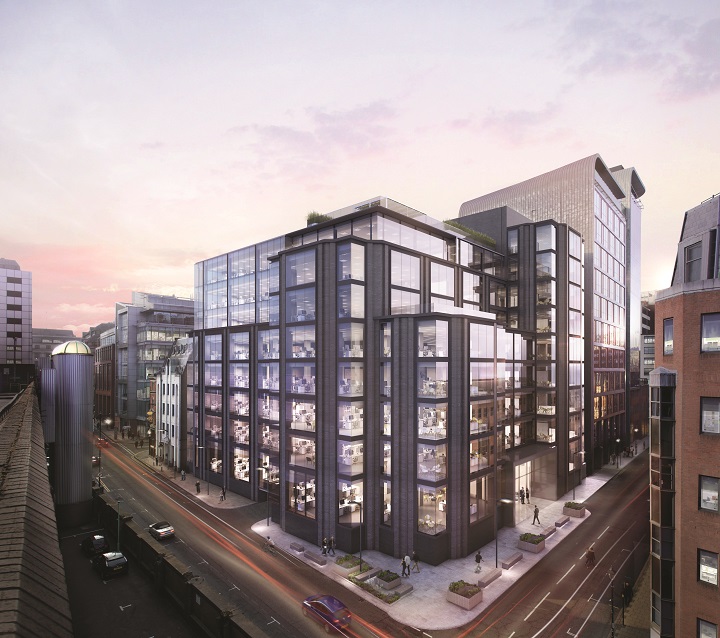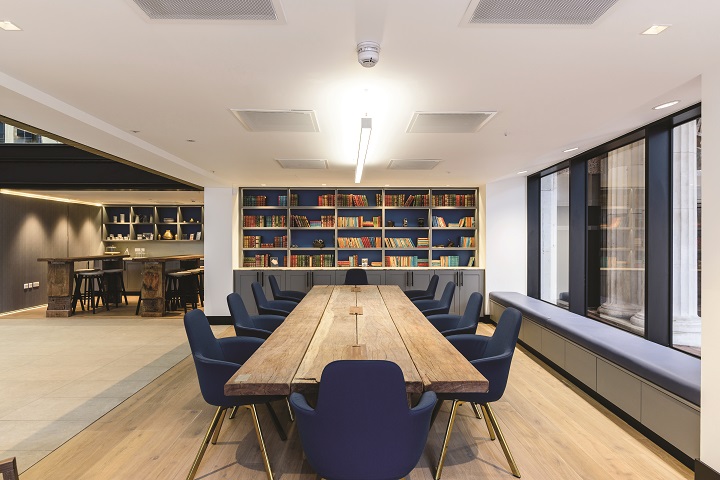Birmingham's city centre regeneration fuels new wave of 'lifestyle-focussed' office development
“If you build it, they will come” is a phrase often used in the property industry, but with each passing year, the accuracy of this expression becomes more outdated.
4 minutes to read
The reason? The needs of the modern occupier have changed.
Space procurement now extends beyond just sourcing a well presented and suitably sized office building. Occupiers are looking for a more comprehensive ‘lifestyle’ package.
Amenity, flexibility and well-being have become a central part of occupational strategy, acting as vital components in attracting and retaining the best talent.
Consequently, for the best chance of securing tenants, today’s developers need to take a customer-centric approach on their offer.
Evidence of this shift can be found in the transformation of Birmingham’s city centre. The city has been the subject of major regeneration in recent years, shedding its outdated concrete jungle image to develop one of a forward looking business hub.
Major development areas such as Snowhill, Paradise Circus and Arena Central, all identified in the Big City Plan, have progressed, with these schemes aimed at the creation of place on a micro and macro scale.
But the lifestyle offer goes further than just being located close to connectivity, shopping and leisure facilities. The fit-out and amenity contained within the development, is an essential part of creating an environment appealing to the needs of staff and business.
Bruntwood’s comprehensive back to frame development of 2 Cornwall Street is a good example of this. The 110,000 sq ft building, now branded Cornerblock, houses a gym, bike storage, fresh-air cooling, large spacious communal outside space, changing facilities and a customer facing reception.
Other recent completions further evidence the push toward offering an ‘all inclusive’ package. L&G’s 113,000 sq ft Lewis Building for instance, boasts of spaces ‘Designed for People’ and includes features aimed toward achieving a high sustainability rating.
The 200,000 sq ft One Colmore Square meanwhile, offers a concierge service and cites a ‘Platinum Wired Score,’ the latter feature recognising that high quality digital connectivity is now a principal consideration of occupiers.

Above: The 110,000 sq ft building, now branded Cornerblock
Above top: Paradise Circus
This type of building product is now not unique in Birmingham, despite the shackles of the financial crisis slowing the pace of transformational development activity, particularly new build.
However, the next three years will see the development pipeline move to the next level. At the time of writing, 1.6m sq ft of Grade A stock was under construction, 90% of which will be via ground up new schemes.
Importantly, around 66% of the current pipeline is speculative build, which indicates both the strength of confidence in the leasing market and an occupier flight to quality.

Above: Lewis Building boasts of spaces ‘Designed for People’ and includes features aimed toward achieving a high sustainability rating
The delivery of One and Two Chamberlain Square will be first of the next wave of new space brought to the market. These two buildings form phase one of the Paradise Circus development, a scheme that will extend the CBD area.
Importantly, the masterplan for this scheme also promises new civic, retail, leisure and hotel space as well as improvement to infrastructure and the public realm.
This is another example of how the creation of a community feel is central to making new locations attractive to occupiers and their employees in Birmingham. PWC has already taken a pre-let of 90,000 sq ft at One Chamberlain Square.
In 2019 and 2020 respectively, Ballymore/M&Gs Three Snowhill and Sterling Ventures/Rockspring construction of 103 Colmore Row will be complete.
Alongside extensive wellbeing and innovative working space, Snowhill also benefits from the new tram system that links Snowhill to New Street Station and Grand Central.
When launched, 103 Colmore Row will become the tallest office building in Birmingham and comprise 206,000 sq ft office space and 15,000 sq ft of leisure space.
The scheme boasts of public realm improvement, large restaurant facilities and full height glazing. The latter feature is a good example of recognising the effect natural light has on employee well-being.
With HMRC agreeing terms on 3 Arena Central and the HS2 project now in receipt of royal assent, the transformation of Birmingham will only quicken over the coming years.
The new rail capacity is significant, creating not just opportunities around Curzon Street, but also serving to widen the accessibility of the city. Access to a wider employment pool will be the result, firmly aligning Birmingham to the first consideration of businesses.
Furthermore, it is clear that public and private investment past, present and future is in the pursuit of creating schemes attuned to the changing requirements of businesses and residents. The balance of business and community is the strategy, a plan that will serve Birmingham well.
This article is part of a series of articles exploring Birmingham's regeneration and current and future residential and commercial property markets and trends including development hotspots and predictions for the years ahead.
Knight Frank Birmingham commercial agency is one of the leading commercial property advisers specialising in all commercial asset types and advisory services in Birmingham and the Midlands.